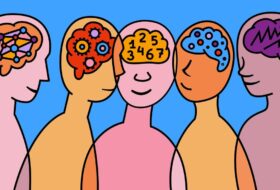
Gambling disorder—and its clinical classification—has long proven a challenge for psychiatry. A new model, called the Hierarchical Taxonomy of Psychopathology (HiTOP), aims address the limitations of traditional psychiatric classifications or taxonomies. However, a recent study has shown that even under that framework, gambling addiction is likely to be a difficult phenomenon to pin down.
The research, undertaken by a trio of academics from Sweden’s Lund University, found that problem gambling meets the criteria for several classifications within the HiTOP framework. Specifically, it involves aspects that HiTOP would classify as internalizing, others that would be externalizing, and still others that would be considered a thought disorder.
The results also suggest that problem gambling risk factors may shift along gender lines, as the mix of those categorizations was different for the men and women in the study group.
Our results also suggest that the placement of gambling problems within the HiTOP framework is not straightforward, as gambling problems relate to all spectra, and gender differences should be acknowledged.
Although both men and women were about equally prone to the externalizing aspects of gambling addiction, men with a gambling problem exhibited more traits on the thought disorder spectrum, while women exhibited more internalizing traits.
HiTOP offers a prismatic view of gambling disorder
The classification of problem gambling as a mental health disorder has long been subject to controversy and debate.
Gambling addiction made its first appearance—initially called “pathological gambling”—in the third edition of the Diagnostic and Statistical Manual of Mental Disorders (DSM) in 1980. With the American Psychiatric Association’s (APA) release of the DSM-4 in 1994, pathological gambling became a sub-category of “Impulse Control Disorders.”
However, by the time the APA published the DSM-5 in 2013, “pathological gambling” had become “gambling disorder” and was reclassified under “Substance-Related and Addictive Disorders.” These shifts reflected the association’s evolving recognition of similarities between gambling and substance disorders.
Then, in 2017, a grassroots consortium of approximately 40 psychologists and psychiatrists introduced the HiTOP. The new classification system for mental disorders offers a dimensional approach to diagnosis that prioritizes scientific evidence over convention and clinical opinion.
Model drops boundaries for range
The DSM treats mental health issues as a set of distinct “disorders,” although a single patient may be found to be suffering from multiple disorders at once. Where HiTOP differs is that it places individuals’ issues on a set of spectra.
Within HiTOP, the primary spectra are internalizing, externalizing, and thought disorder.
The model defines these spectra as:
- Internalizing: internally experiencing an excess of negative emotions like fear, distress, and anhedonia (lack of pleasure).
- Externalizing: outwardly exhibiting behavioral issues, including aggression, manipulation, impulsivity, and risk-taking.
- Thought disorder: odd and irrational thoughts and perceptions (e.g. delusions, hallucinations, and magical thinking).
There are also two less common spectra:
- Detachment: social withdrawal, apathy, or lack of emotional expression
- Somatoform disorder: experiencing pain or other physical impairments without any underlying medical cause, such as somatic symptom disorder
However, as the researchers pointed out, where gambling problems fit within the HiTOP is unclear.
With that in mind, the team set out to “examine how gambling problems are associated with the broad internalizing, externalizing, and thought disorder HiTOP spectra.”
To do so, they surveyed 1005 Swedes (52.4% men), 18 or older, who had gambled for money at least once in the previous year.
Based on previous findings, they hypothesized gambling problems would be “most clearly associated” with the externalizing spectrum and” significantly but less strongly” with internalizing. They also examined associations between problem gambling and thought disorders and how gender might affect associations but without set expectations.
Externalizing traits strongly linked to gambling problems
Interestingly, the results revealed gambling problems as a distinct factor with “significant and strong” correlations with all HiTOP spectra.
However, as hypothesized, when examining “more unique” associations, the team found problem gambling most strongly associated with externalizing traits. The thought disorder spectrum, and to a lesser extent, the internalizing spectrum, followed.
Also of note: gender differences did appear in the associations between gambling problems and the HiTOP spectra.
Research has previously indicated that ‘irrational beliefs’ and ‘running from your emotions’ were among the risk factors for problematic gambling. However, these results seem to provide evidence that depending on gender, one or the other is more likely to be the driving factor.
For men, gambling problems had the most significant association with the thought disorder, then the externalizing spectrum. Conversely, women’s gambling problems were most strongly associated with the externalizing spectrum, followed by the internalizing spectrum.
In other words, the results suggest gambling issues are primarily associated with externalizing traits but that in men, there’s a heavy element of irrational belief. Meanwhile, in women, there’s a less extreme but still distinct element of internalized feelings.
These results, they concluded, confirm “the unique link between gambling problems and externalizing symptoms.” It also reveals a “significant difference” in some gambling problem associations across genders
The researchers also note the gambling problems—thought disorder association observed in men is a novel result.
While scholars have previously linked dissociation to gambling disorder, gender differences in this association have not been examined, they said. Further research into the link between gambling problems and the thought disorder spectrum is necessary, they added.
To better understand the placement of gambling problems within the broader psychopathological landscape, longitudinal studies that use brief but valid measures across the major subfactors of the HiTOP are needed.





